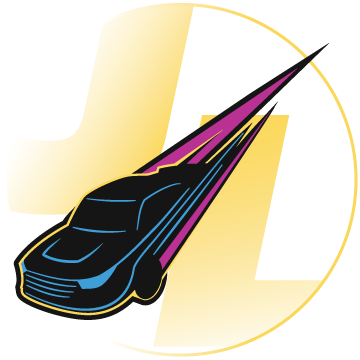This week, a few NASCAR Cup Series drivers will test the repaved Sonoma Raceway for the first time. This tire test is critical, and it could directly affect the racing product we see at the track in June. What is it that makes this tire test so important?
Tire test at repaved Sonoma today and Wednesday (weather permitting Wednesday). Closed to public. Manufacturer chooses team and/or driver for tire tests. This test: Chastain (Chevy), Truex (Toyota), Berry (Ford).
— Bob Pockrass (@bobpockrass) March 26, 2024
Repaves are often met with a collective groan from drivers and fans alike. This is because of how straight repaves with no reconfiguration tend to negatively impact the racing product.
Repaves often create single-groove racing on ovals, which often hurts oval-track racing. On road courses, however, there is only one groove throughout the track to begin with, so, a repave doesn’t narrow the racing groove up any. Look at the highlights below from the Watkins Glen repave in 2016, and that shows that a repave doesn’t change much in terms of where drivers race on track.
Where road courses can feel the impact the same as ovals is tire wear. Repaves are often quite easy on tires for two reasons. First, the track surface is smooth, which means that there’s no jagged edge of a worn-out surface to dig into and wear the tire as much.
Secondly, Goodyear tends to be quite conservative with what tire they bring to a new surface. Goodyear is generally very conservative anytime a new variable is introduced at a race track. This can be traced back to the 2008 Brickyard 400, where the combination of a new race car and a newish racing surface created tire blowouts after 10-12 laps.
A more conservative tire and a surface that doesn’t wear out tires means less tire wear. Less tire wear leads to fewer comers and goers, and a straight-forward pit strategy. If there’s little to no falloff, crew chiefs strategize solely for fuel mileage.
Sonoma is a race track that is known for wearing out tires. The harsh acceleration out of the corners combined with the older track surface means that fresh tires are vital to a fast lap time.
We saw at Bristol Motor Speedway how much that harsh tire wear can impact a race. While the jury is still out amongst drivers about whether or not that tire wear was too extreme, Jeff Gluck’s “Was it a Good Race?” poll registering 88% yes votes shows that the vast majority of fans enjoyed the race.
Tire wear, tire management, and tire strategy often create compelling racing. It constructs lap time variability throughout a run, which is important on a track like Sonoma where it is notoriously hard to pass.
For a Sonoma race to be compelling, there needs to be some tire management and pit strategy involved, especially over the long run. This was evidenced by the 2023 race, which saw only two caution flags, including a 50-lap run to start the race before a caution flag. The 2019 race saw no cautions aside from the two stage breaks.
That’s what makes this tire test so important. The goal should be creating a tire that wears out, forcing driver and crew chiefs to manage it over the long run. This will create the most compelling racing product that Sonoma can bring.
Drivers were made available to the media following the test on Tuesday. Martin Truex Jr. showcased just how different the track is, particularly with how much grip it has.
#NASCAR … Martin Truex Jr. is among those doing a tire test at Sonoma today. He says speeds are up. More of what he says … pic.twitter.com/RWfVNI2ZlF
— Dustin Long (@dustinlong) March 27, 2024
You attack all the corners the same, you’re just doing it a lot faster. A lot more on-throttle time. Forward drive is a non-issue. It’s all about how deep can you get in the corner, how fast can you get it rotated, and get it back wide-open. Not a whole lot of finesse and being smooth with the pedals like we used to have to do here.
Martin Truex Jr.
Ross Chastain gave some more insight into just how much grippier the track is. More grip means more speed, and he says that they were 3 seconds faster than the track record in the video below.
.@RossChastain had a heckuva day here for day 1 of the @NASCAR @GoodyearRacing tire test! pic.twitter.com/G3Ac4qtxIK
— Sonoma Raceway (@RaceSonoma) March 27, 2024
Both drivers seemed to have different opinions on tire wear. While Truex Jr. admitted that he only made a 12-13 lap run, he does not expect major tire falloff.
#NASCAR … Martin Truex Jr., doing a tire test today at Sonoma, on how he thinks the repave could impact the racing there when the Cup Series races at that road course in June. pic.twitter.com/Em5vkipHPp
— Dustin Long (@dustinlong) March 27, 2024
You put a couple of equal cars up front, and, there’s not going to be any chance for tires to wear out and a guy to have an advantage as much as there used to be.
Martin Truex Jr.
Ross Chastain gave a different perspective. He claims that tire were was more than he expected it to be. Brock Beard, who was at the test, theorized that it could be different drivers testing different compounds.

What will the race actually look like in June? Time will ultimately tell.
